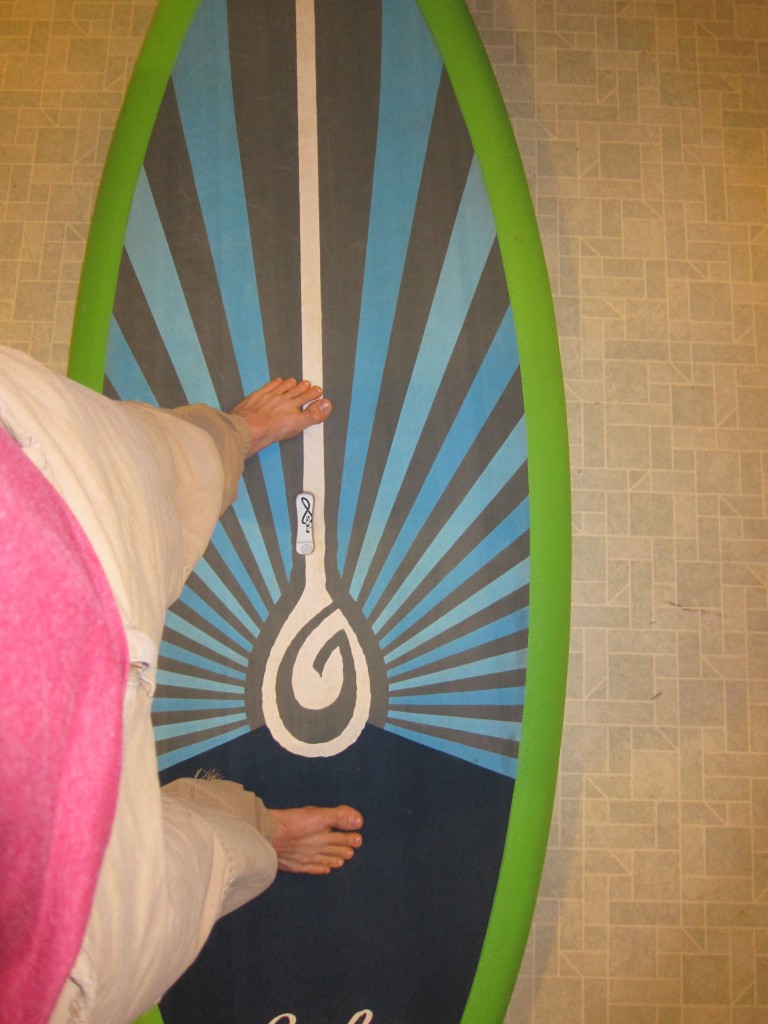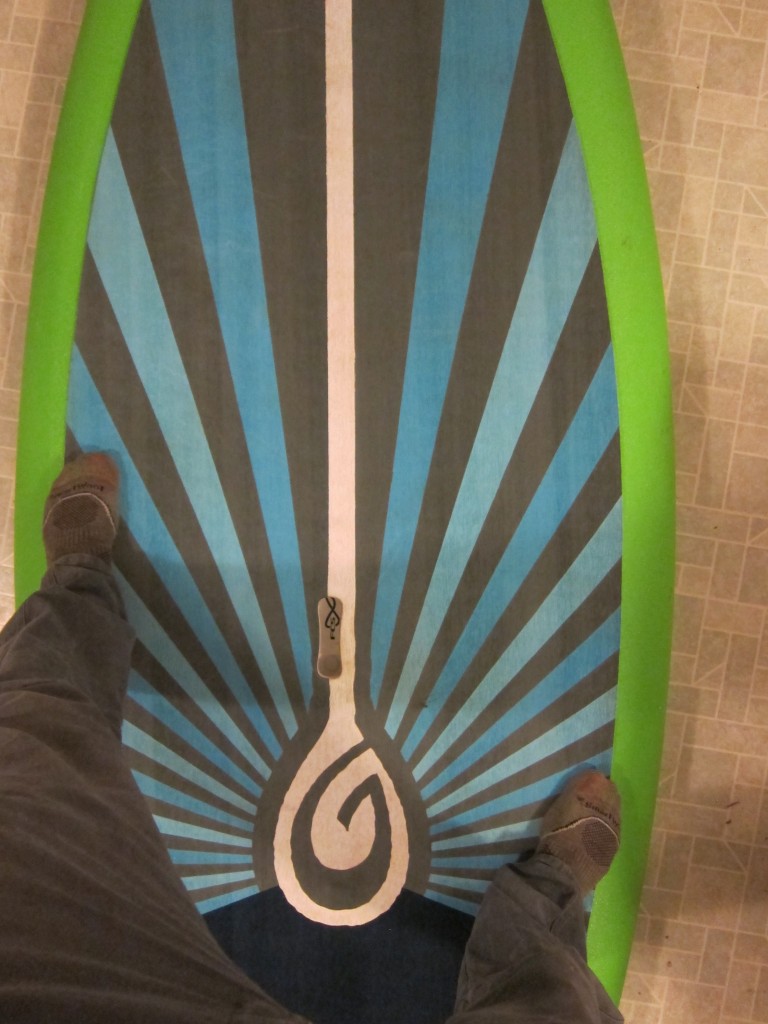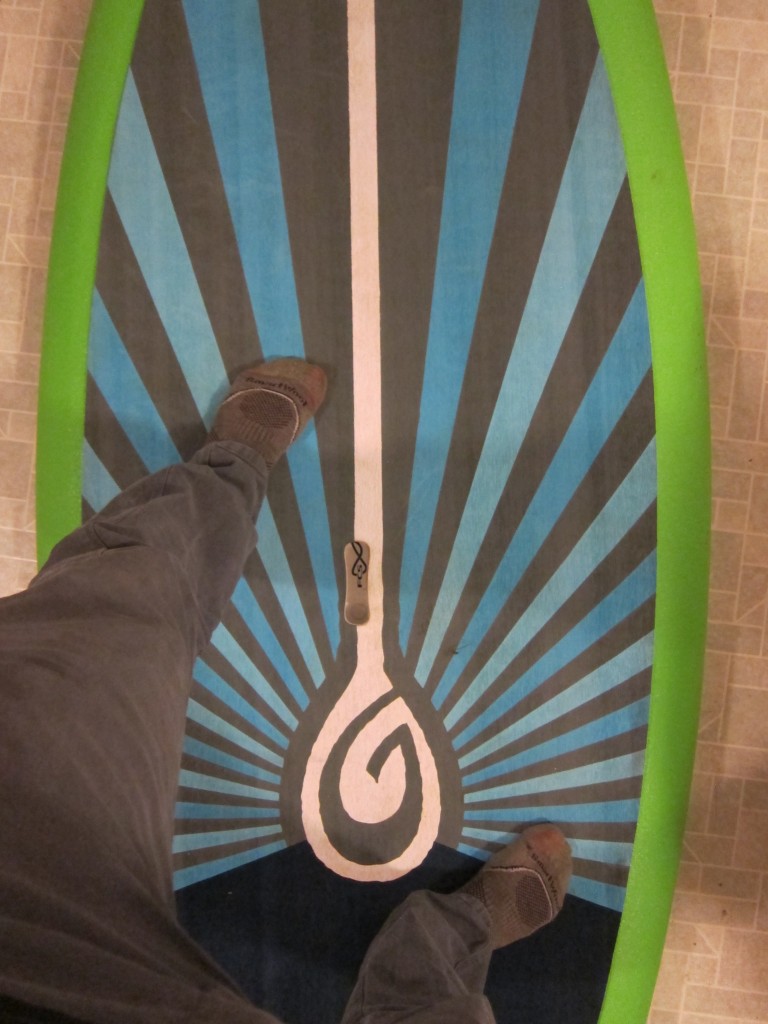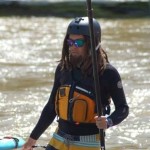This is the sixth post in a multi-post tutorial on how to get started SUP river surfing. Checkout the other posts as well:
- Part 1: The Gear
- Part 2: Scoping out the wave
- Part 3: Plotting a course onto the wave
- Part 4: Padding stances to catch the wave
- Part 5: Paddle strokes to catch the wave
- Part 6: Stances and footwork for surfing the wave
- Part 7: Paddle strokes and braces for surfing the wave
If you’ve been following along with the previous posts, we’ve covered everything needed to catch a river wave. Once you’re on the wave, the hardest part is over! In the next couple posts I’ll be covering things that will make surfing the wave (after you’ve caught it) much easier.
Once you’re on the wave, you should be in surf stance (after making a jump from a neutral stance). Surf stance is required when you need to control the nose of your board. In particular, it allows you to control how high off the water the nose of your board stays.
There are two scenarios in which controlling the height of the nose is important. The first is known as pearling. This happens when the nose of your board goes under water and often causes you to fall. It’s very hard to recover from a pearl, so it’s best to avoid it entirely. If the nose of your board is getting too close to the water, put more weight on your back foot. This will raise the nose of your board and (hopefully) keep you from pearling.
pearling in Clear Creek
The second scenario is getting flushed off the back of the wave. Weighting your back foot and raising the nose will cause your board to slow down. If you slow down too much, you’ll get pushed downriver off the wave. If you feel yourself slowing down or getting pushed off the wave, put more weight on your front foot. The closer the nose of your board is to the water, the faster it’ll be and the more likely you’ll be able to stay on the wave.
Between these two scenarios you have to balance between keeping the nose of your board down to stay on the wave and keeping the nose of your board up to avoid pearling. With practice this will come naturally. Here’s Erin fighting to keep that balance on a wave in Golden, CO:
Once she catches the wave, the board almost pearls and she weights her back foot to raise the nose. As a result of weighting her back foot you can see her getting pushed downriver off the wave. She then puts a little more weight forward to find a good balance and stays on the wave.
When in surf stance, the wider your stance (i.e. the further apart you keep your feet) the more control you will have. I find it best to start surfing using a super wide stance, then as I get the feel for where my weight needs to be on the board, I move my feet closer together. You can keep a wide stance, but it requires more strength and energy.
If you find that even with a wide stance you are still pearling or getting flushed off the wave, you may have to change your position on the board. So if you are constantly pearling despite putting all your weight on your back foot, try jumping from neutral stance into surf stance further back on the board. Conversely if you keep getting flushed, try jumping into surf stance closer toward the nose.
On longer boards (greater than 8 feet) you may find that simply shifting your weight is not enough. You may have to shift your entire body by shuffling your feet towards to the nose or tail. Here’s a clip of me on a 9’2″ board having to shuffle forward and back to stay on the wave:
In addition to controlling the nose of your board, you will also have to keep the rails from getting caught by the flow of water. This happens when are you turning and your upstream rail gets caught by the wave and flips your board. If you’ve ever snowboarded, this is very similar to “catching an edge”.
catching a rail a Library Hole, in Golden
To avoid catching a rail, the technique is fairly simple to understand but can be difficult to master. The basic idea is to keep your downstream rail weighted. To weight one rail or another, you shift your weight between your toes and heels. By weighting your downstream rail, you will allow the flow of water to move smoothly beneath your board. If you weight your upstream rail, the river will instantly grab it and flip your board.
If you find yourself constantly catching a rail, you can try a slightly different stance: the Kung Fu stance.
This stance is a mix of neutral and surf stance. It gives you much greater rail control by allowing you to shift your weight between your feet to control your rails. The downside to using this stance while surfing is you have less control over the nose of the board. I’ll often use a stance that is somewhere between a Kung Fu stance and a traditional surf stance. It gives me a little more rail control without sacrificing much nose control.
This stance is also helpful if you’re on an extra wide board. The wider the board, the more effort it will take to control the rails. I find that on boards wider than 30 inches, I move closer and closer to a Kung Fu stance.
Of course even with the best stance and footwork you can always lose you balance while surfing. In the next post I’ll talk about how to use the paddle to keep your balance on the wave.
If you’re enjoying these posts, be sure to follow the blog on Twitter or like it on Facebook to receive updates of new posts!
Click here to read Part 7: paddle strokes and braces for surfing the wave.




